
After a long winter, spring is the perfect time to clean out your home and make room for new, green habits. If getting green was one of your New Year’s Resolutions, and you haven’t been able to find the ways to get it done, here are 12 tips to add some green to your spring.
1. Green Spring Cleaning

The onset of spring always motivates us to get down and scrub the floors and remove the cobwebs from the corners. This year, use green products instead of harsh chemicals for cleaning. Lemons and baking soda can be used to clean and freshen kitchen counters, showers, tubs, and sinks. Use vinegar and warm water for floors and to remove the sticky, greasy dust that builds up in the kitchen on walls, top of refrigerator, and corners. Clean windows streak-free with old newspaper and 3 tablespoons of vinegar in 1 gallon cold water.
2. Clean Air Ducts
Make your spring cleaning last longer by cleaning your air ducts. Clean air ducts will also lessen the amount of dust, pollen, and other pollutants that circulate around your home as outdoor plants come to life. Air Duct cleaning will decrease allergens & improve the energy efficiency of your heating and cooling system.
3. Buy Air-Cleansing Plants
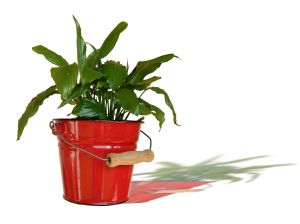
Naturally freshen the air after your air ducts have been cleaned with air-cleaning house plants like English Ivy, chrysanthemums, and spider plants. If allergies and asthma are a problem in your household, these plants may be able to help keep the air clean. Plus, healthy green plants bring spring indoors.
4. Home Improvements
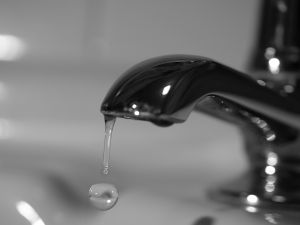
Spring is a great time to do energy-saving home improvements like replacing windows, adding insulation, and repairing leaks and drafts. Before the heat of summer sets in, make sure to perform home improvements that will keep the heat out and air-conditioned air in. This is also a good time to service your AC unit and replace filters.
5. Plant a Garden

Instead of adding landscaping, why not plant a garden? Your beautiful plants can also provide delicious, nutritious food for your family. Check seed packs for the best time to plant in your area and dedicate a few square feet of your yard to food-producing plants. Make sure to keep food healthy by not using chemical fertilizers and instead, use organic plant foods
available at most garden stores.
6. Start To Compost
If you already recycle and still want to reduce the amount of waste you produce, start a compost pile. There are many ways to compost and you don’t need to buy an expensive plastic unit to do so. You can just dig a hole in the ground and add compostables. Stir with a pitch fork once a week and cover with leaves or a tarp. You will be amazed at how much “trash” you can compost and use in your garden.
7. Replace Bulbs
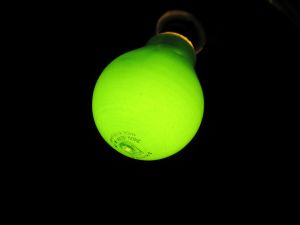
Replace incandescent bulbs in your home with energy efficient CFL bulbs. There are now many warm tones of light available. You can also add outdoor solar lighting to your garden or walkway. These lights recharge in the sun and can be set to automatically turn on when the sun goes down.
8. Replace Old Appliances

Replace your old appliances with energy star rated appliances. You will save energy and money and help reduce the strain on energy needs over the summer. Also, hang your laundry outside to dry in the sun. It will smell fresh and save lots of energy while the weather is nice.
9. Ride Your Bike to Work

Now that the weather is improving, why not make the commitment to ride your bike to work at least one day a week? The exercise will help you trim up after the winter, improve your health, and increase energy level. If biking is not an option, then use public transportation, carpool, or walk. The first few weeks may seem an inconvenience, but you will soon look forward to the exercise and time spent outdoors.
10. Shop at the Farmer’s Market

Support local farmers by shopping at farmer’s markets. Most areas have a few, and one will surely work for your schedule. By shopping at farmer’s markets you will eat healthy foods that are in season, get some exercise by walking around, and support your local economy. It is a great way to get green.
11. Recycle your Old Stuff

While you do your spring cleaning, gather up all your old clothes, toys, and furniture that is still usable and donate it to a local charity that helps families in need. The economy has likely affected families in your community, so give you old stuff to people that can use it. There is no sense in throwing anything away that can still be used.
12. Green Beauty Products

Since you will be showing more skin now that its spring, bring going green into your skincare regimen. Buy lotions and other products that contain natural ingredients that haven’t been tested on animals. Many make-up companies now offer organic lines that are better for your skin and the environment. Look for items that aren’t overly packaged with plastic, can be refilled, or reused.
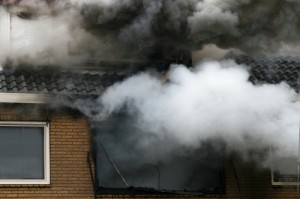 An air duct system is very efficient at spreading smoke. When a fire occurs, the entire HVAC system will be contaminated, to a lesser or greater degree. It is likely that the air duct system will distribute smoke damage well beyond the area of the fire.
An air duct system is very efficient at spreading smoke. When a fire occurs, the entire HVAC system will be contaminated, to a lesser or greater degree. It is likely that the air duct system will distribute smoke damage well beyond the area of the fire.

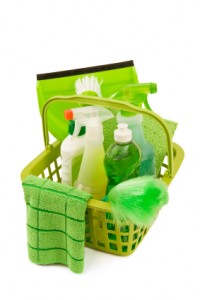 Green air duct cleaners employ advanced methods and materials specifically for green cleaning. They make an extra effort to not allow any dust to escape outdoors or indoors, and only use natural cleaning products.
Green air duct cleaners employ advanced methods and materials specifically for green cleaning. They make an extra effort to not allow any dust to escape outdoors or indoors, and only use natural cleaning products. The greatest difficulty in solving indoor air quality problems is that effects on people can vary. One of a pollutant can have a completely different effect on two different people. While pollutants found in indoor air can be responsible for many harmful effects, there is considerable uncertainty as to what concentrations or periods of exposure are necessary cause specific health problems.
The greatest difficulty in solving indoor air quality problems is that effects on people can vary. One of a pollutant can have a completely different effect on two different people. While pollutants found in indoor air can be responsible for many harmful effects, there is considerable uncertainty as to what concentrations or periods of exposure are necessary cause specific health problems. A host of different biological, gas, and particulate pollutants can affect the indoor air quality. The types of contaminants and the amounts that are suspended in the air determine air quality.
A host of different biological, gas, and particulate pollutants can affect the indoor air quality. The types of contaminants and the amounts that are suspended in the air determine air quality.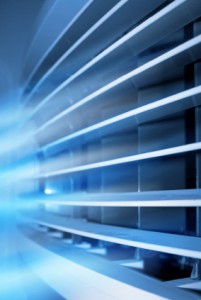 Air pathways are a key component of indoor air quality. Understanding and improving air pathways will greatly improve your indoor air quality.
Air pathways are a key component of indoor air quality. Understanding and improving air pathways will greatly improve your indoor air quality.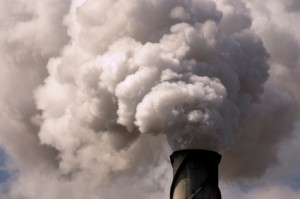 Several factors contribute to poor indoor air quality that can be easily controlled. Air pressurization greatly affects the indoor air quality of a home or building.
Several factors contribute to poor indoor air quality that can be easily controlled. Air pressurization greatly affects the indoor air quality of a home or building.










 While you will never be able to completely rid your home of dust. Here are 10 great tips to reduce the amount of dust and other allergy-aggravating particles from your home.
While you will never be able to completely rid your home of dust. Here are 10 great tips to reduce the amount of dust and other allergy-aggravating particles from your home.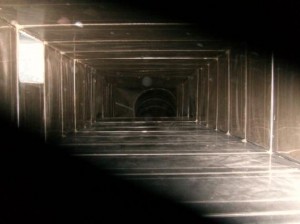 Air ducts are used to distribute air through out a building, or to exhaust air outside of a building. The most common are: sheet metal, fiberglass lined, fiberboard, and flex-line air ducts.
Air ducts are used to distribute air through out a building, or to exhaust air outside of a building. The most common are: sheet metal, fiberglass lined, fiberboard, and flex-line air ducts. Finding a reputable air duct cleaning service is important if you want the job done right and your home respected during the cleaning process. Here are a few tips to finding a quality cleaner in your area.
Finding a reputable air duct cleaning service is important if you want the job done right and your home respected during the cleaning process. Here are a few tips to finding a quality cleaner in your area.